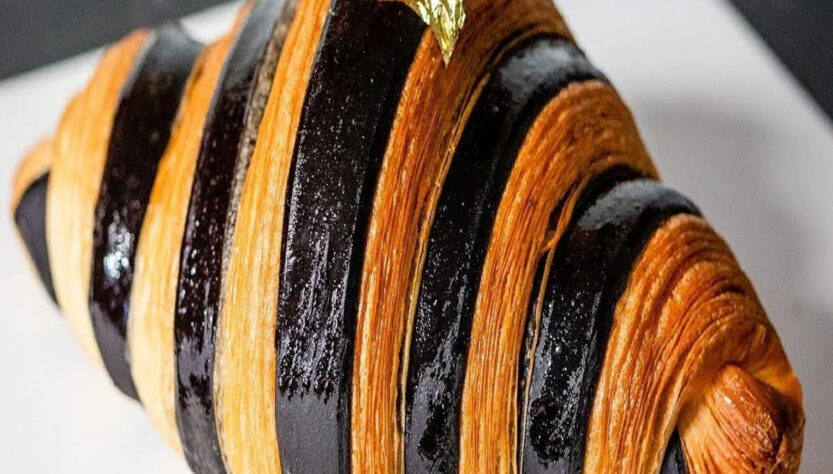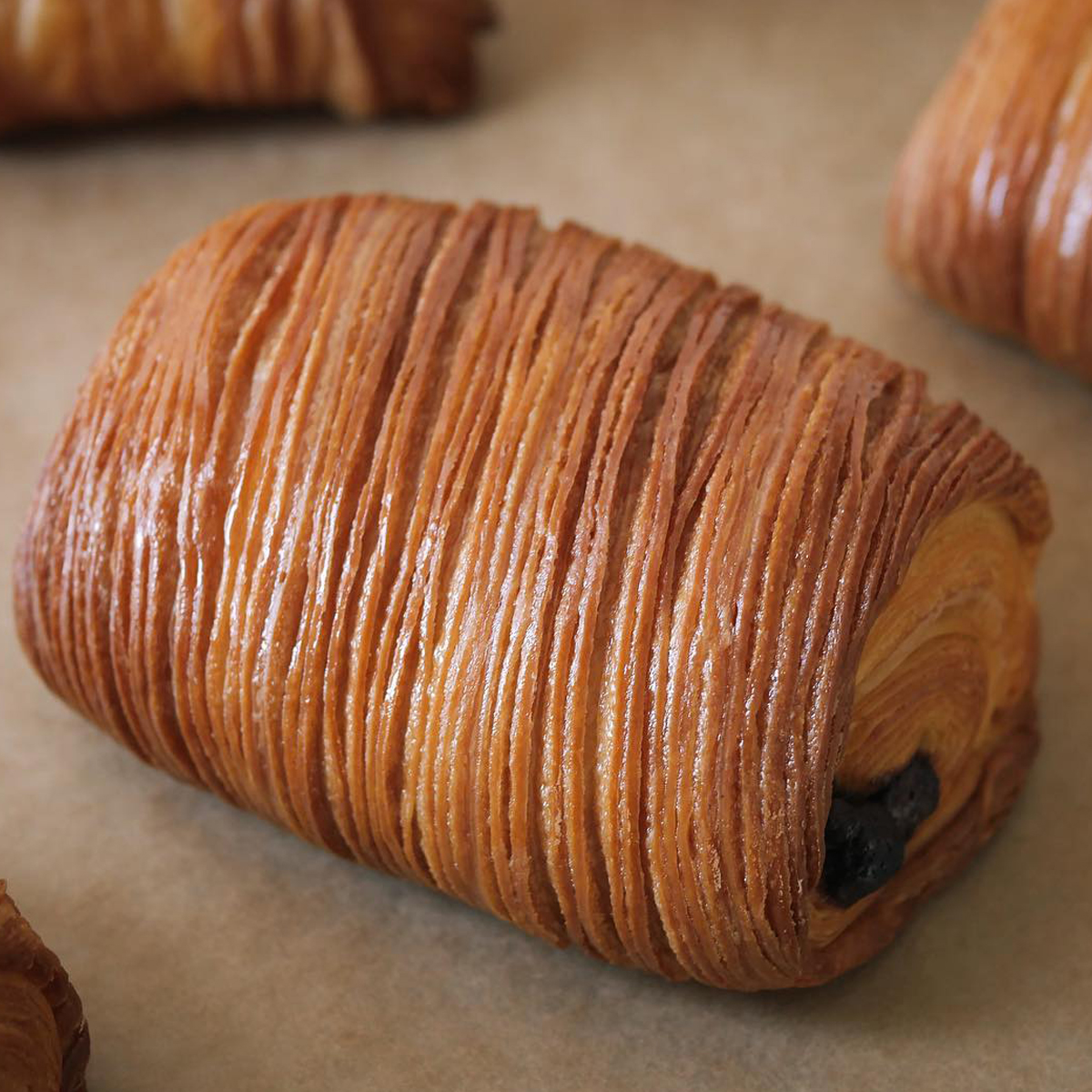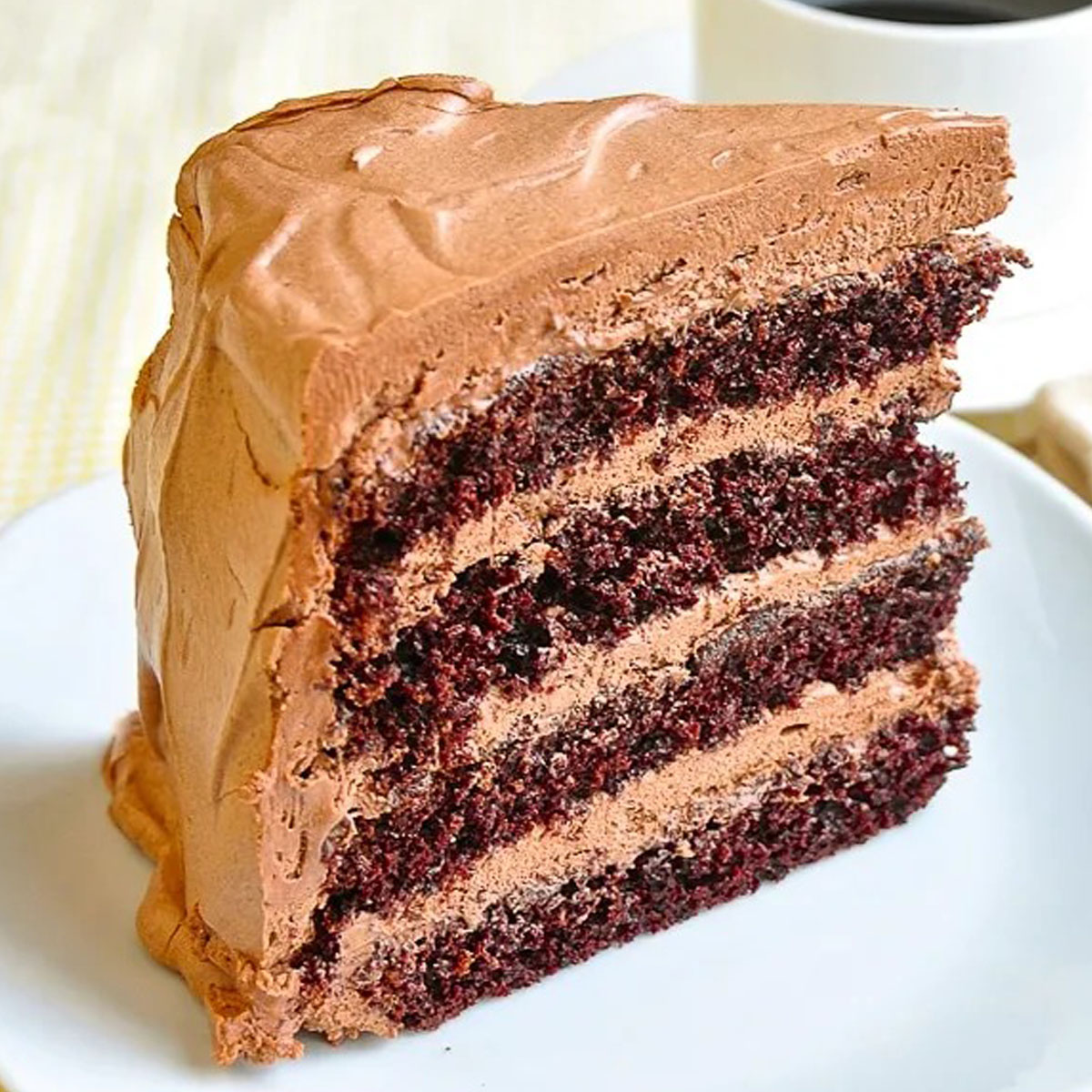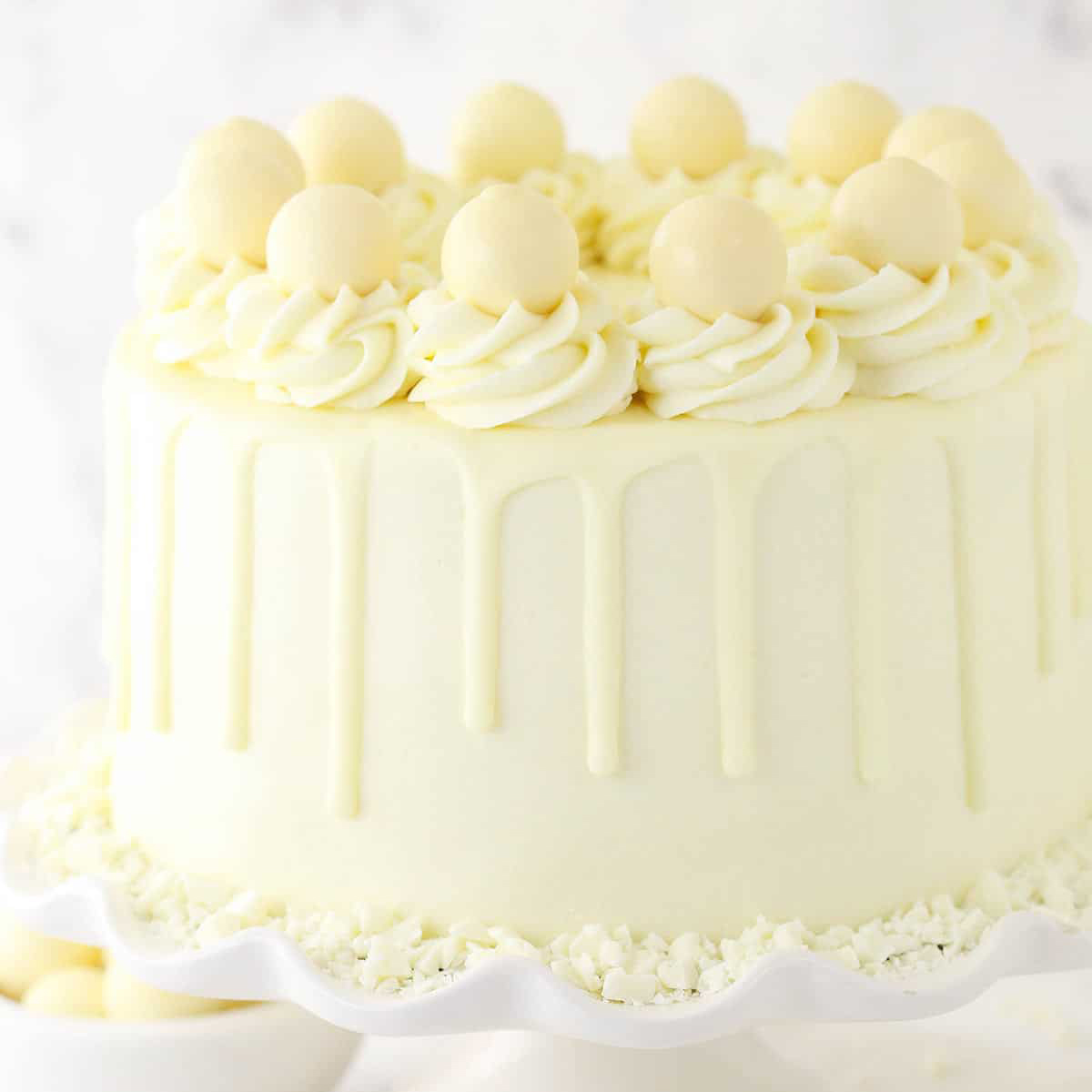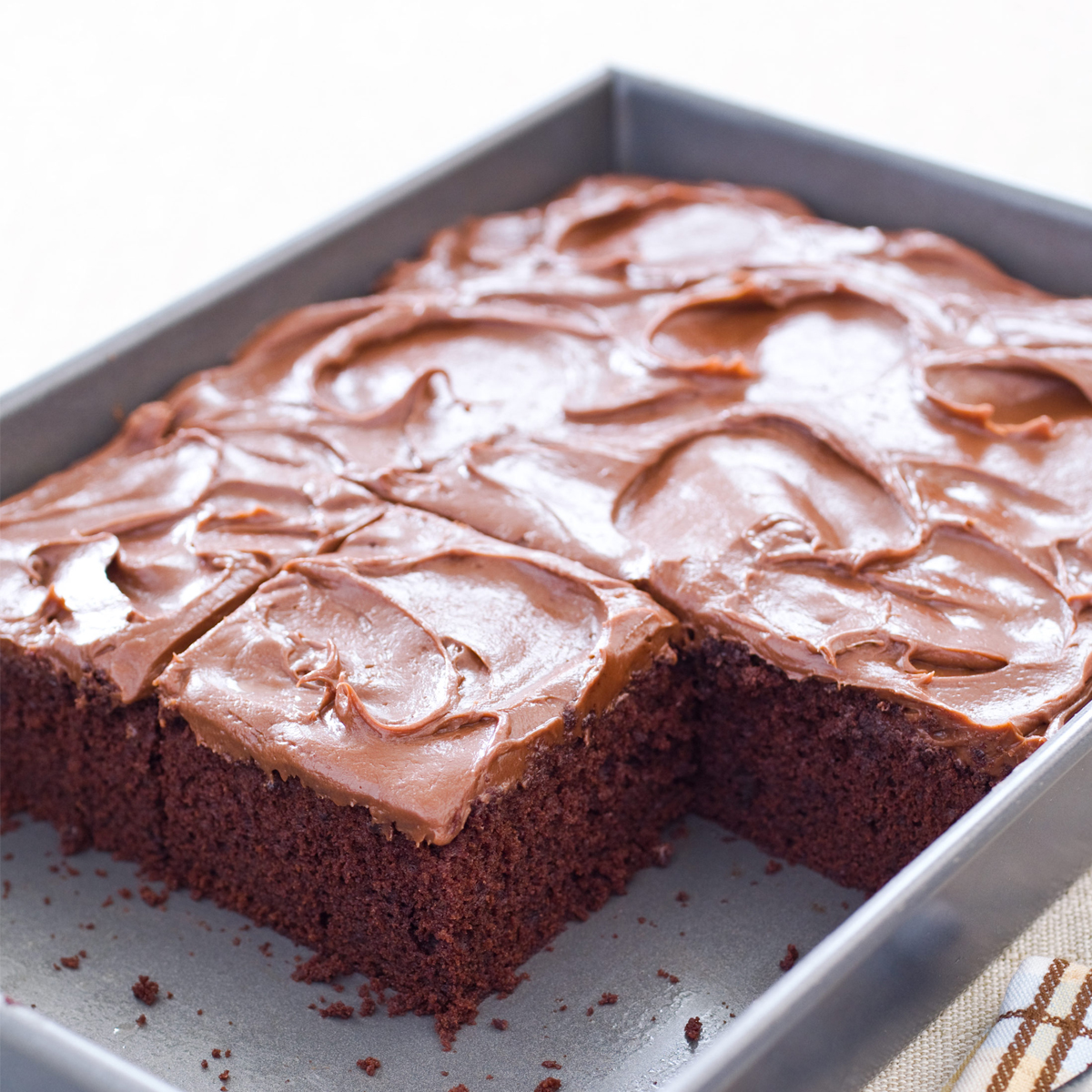A delectable fusion of flaky pastry and rich cocoa indulgence, the Chocolate Croissant, also known as “pain au chocolat,” is a beloved pastry that tempts the senses with its delightful aroma and irresistible taste. Originating from France, this pastry masterpiece features layers of buttery, golden-brown dough that encase a generous strip of decadent chocolate. With each bite, you’ll experience the satisfying contrast of crisp, buttery layers and the smooth, velvety chocolate center. Whether enjoyed as a morning treat, a comforting snack, or a luxurious accompaniment to a hot beverage, the Chocolate Croissant is a timeless creation that brings together the elegance of French baking and the universal love for chocolate.
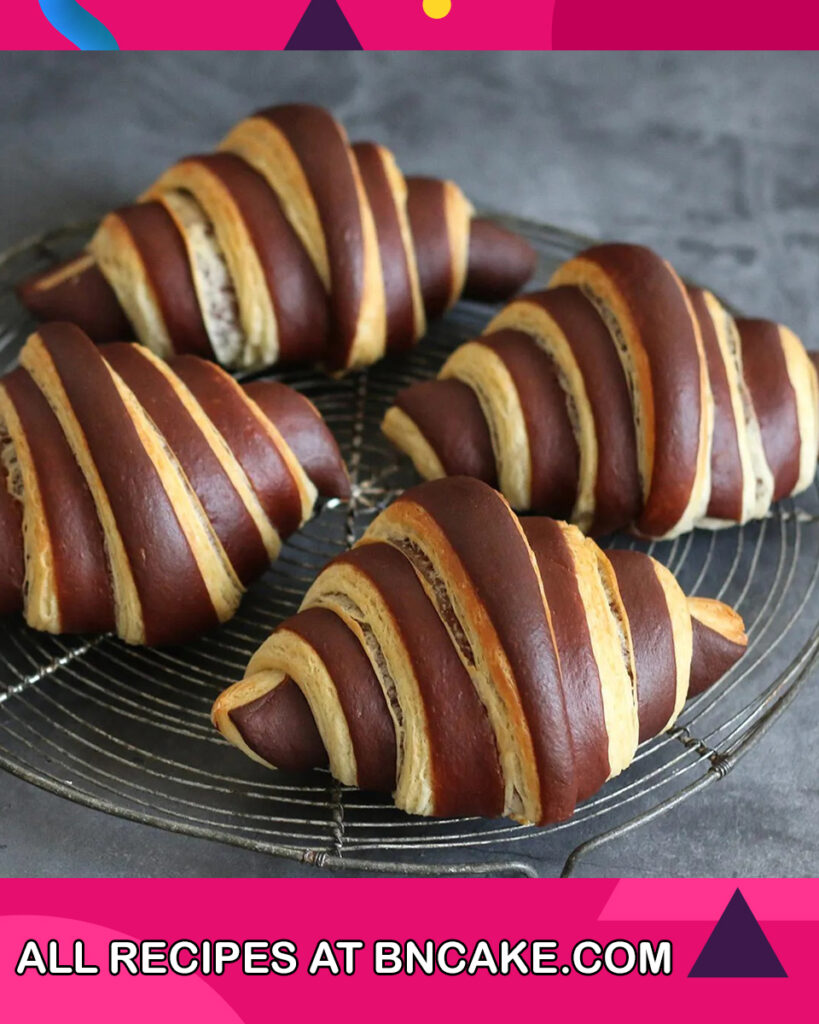
What Is Chocolate Croissant?
A Chocolate Croissant, also known as “pain au chocolat” in French, is a popular pastry made from laminated dough that is layered with chocolate filling. It is a type of viennoiserie, which refers to baked goods that are similar to bread but enriched with butter and sometimes sugar. The Chocolate Croissant is known for its flaky and buttery texture, created through a process of folding and rolling the dough multiple times.
The pastry is typically made by enclosing a strip of chocolate or chocolate baton within the layers of dough. As the croissant bakes, the butter in the dough creates steam, leading to the expansion of the layers and the creation of a light and airy interior. The exterior becomes golden brown and crispy, forming a delightful contrast with the soft and melty chocolate center.
Chocolate Croissants are enjoyed as breakfast pastries, afternoon snacks, or treats to accompany coffee or tea. They are a staple in bakeries and cafes around the world, particularly known for their association with French cuisine and culture.

Why You Will Love Chocolate Croissant Recipe?
- Irresistible Flavor: The combination of buttery, flaky pastry and rich chocolate creates a flavor profile that’s both indulgent and satisfying.
- Decadent Texture: With its delicate layers that shatter upon each bite and a luscious chocolate filling, the croissant offers a luxurious and delightful texture.
- Homemade Delight: Baking Chocolate Croissants from scratch lets you enjoy the warm, freshly baked pastries right in your kitchen, filling your home with an incredible aroma.
- Impressive Presentation: Serving homemade Chocolate Croissants showcases your culinary skills and can impress friends and family with a bakery-worthy treat.
- Customization: You have the freedom to use high-quality chocolate, experiment with dark, milk, or white chocolate, and adjust the sweetness to your liking.
- Special Occasions: Chocolate Croissants can elevate a brunch spread, make birthdays memorable, and add a touch of elegance to any gathering.
- Creative Twist: You can get creative by adding nuts, fruits, or spreads to the croissant, turning it into a canvas for your culinary imagination.
- Shared Joy: Baking Chocolate Croissants is a wonderful way to bond with family members, friends, or kids, creating lasting memories in the kitchen.
- Freshness: Enjoying Chocolate Croissants straight from the oven ensures they’re at their peak freshness and flavor.
- French Bakery Experience: By recreating this classic French pastry at home, you’ll capture the essence of a Parisian bakery experience in your own surroundings.
In short, mastering a Chocolate Croissant recipe means unlocking a world of culinary pleasure, creativity, and satisfaction. Whether you’re a baking enthusiast or simply a lover of delicious treats, this recipe offers a delightful journey that culminates in a scrumptious reward.
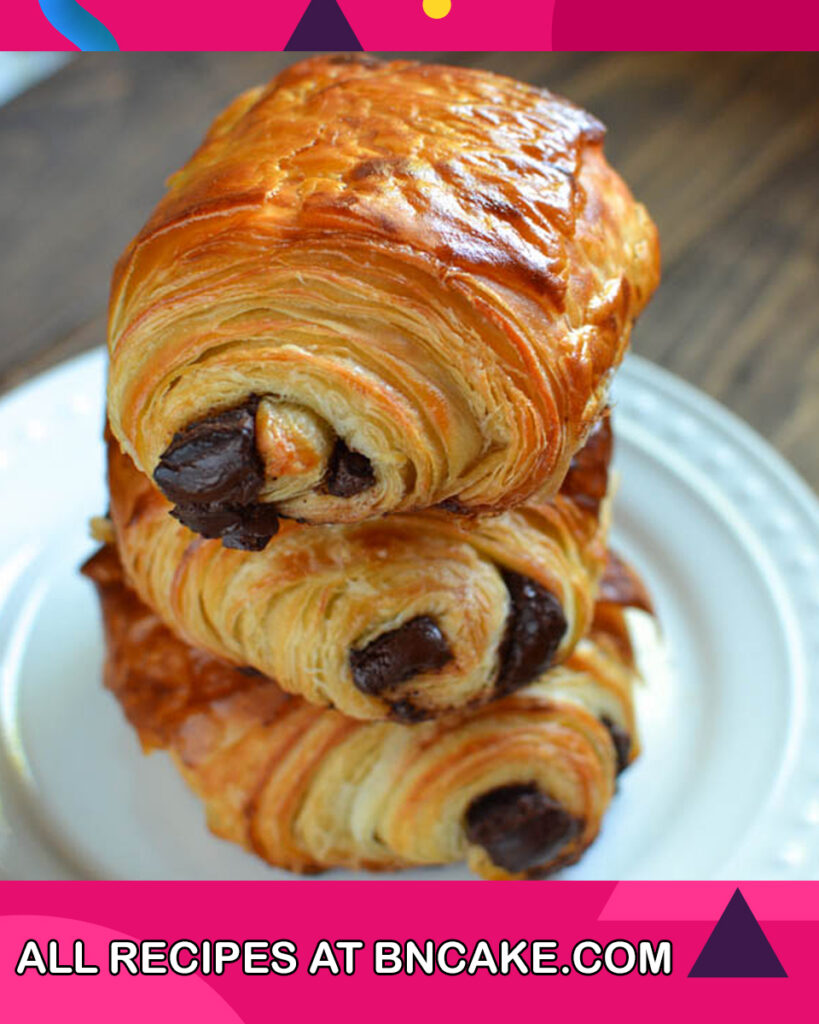
Ingredients For Chocolate Croissant
For the Dough:
- 2 ¼ cups all-purpose flour
- ¼ cup granulated sugar
- 1 packet (2 ¼ tsp) active dry yeast
- ½ cup warm milk
- ½ cup warm water
- ½ tsp salt
- 1 cup unsalted butter, cold but pliable
- 1 egg, beaten (for egg wash)
For the Chocolate Filling:
- 4-6 chocolate bars or chocolate batons (dark, milk, or semi-sweet), cut into strips
For the Egg Wash:
- 1 egg, beaten
Optional:
- Powdered sugar (for dusting)
- Melted chocolate (for drizzling)
How To Make Chocolate Croissant
1. Making the Dough:
- In a mixing bowl, combine ½ cup warm milk and ½ cup warm water.
- Sprinkle 1 packet (2 ¼ tsp) of active dry yeast over the liquid and let it sit for 5-10 minutes until foamy.
- Add ¼ cup of granulated sugar and ½ tsp of salt to the yeast mixture, stirring until dissolved.
- Gradually add 2 ¼ cups of all-purpose flour and mix to form a soft dough.
- Turn the dough out onto a lightly floured surface and knead until smooth.
- Shape the dough into a rectangle, wrap it in plastic wrap, and refrigerate for 30 minutes.
2. Incorporating Butter:
- Roll out 1 cup of cold but pliable unsalted butter between two sheets of plastic wrap into a rectangle about half the size of the dough.
- Place the butter sheet over one half of the dough rectangle and fold the other half over the butter, sealing the edges.
- Roll out the dough-butter combination into a larger rectangle.
- Fold the dough into thirds, like a letter. Wrap it in plastic wrap and refrigerate for 30 minutes.
- Repeat the folding and chilling process (turns) at least 3-4 times.
3. Shaping and Assembling:
- Roll out the laminated dough into a large rectangle on a floured surface.
- Cut the dough into smaller rectangles, approximately 4×6 inches.
- Place a strip of chocolate at the wider end of each rectangle and roll the dough over the chocolate, sealing the ends.
- Place the rolled croissants on a parchment-lined baking sheet, seam side down.
4. Final Steps:
- Brush the croissants with the beaten egg for a glossy finish.
- Let the croissants rise at room temperature for 1-2 hours, until they double in size.
- Preheat the oven to 375°F (190°C).
- Brush the croissants with another layer of egg wash.
- Bake the croissants for 15-20 minutes, or until they’re golden brown and puffed.
5. Serving:
- Allow the croissants to cool slightly before serving.
- Optionally, dust with powdered sugar or drizzle melted chocolate over the croissants.
Enjoy your homemade Chocolate Croissants!
(Note: The process of making croissants requires several steps and some practice to achieve the desired flaky texture. Don’t be discouraged if your first batch isn’t perfect; practice makes perfect!)
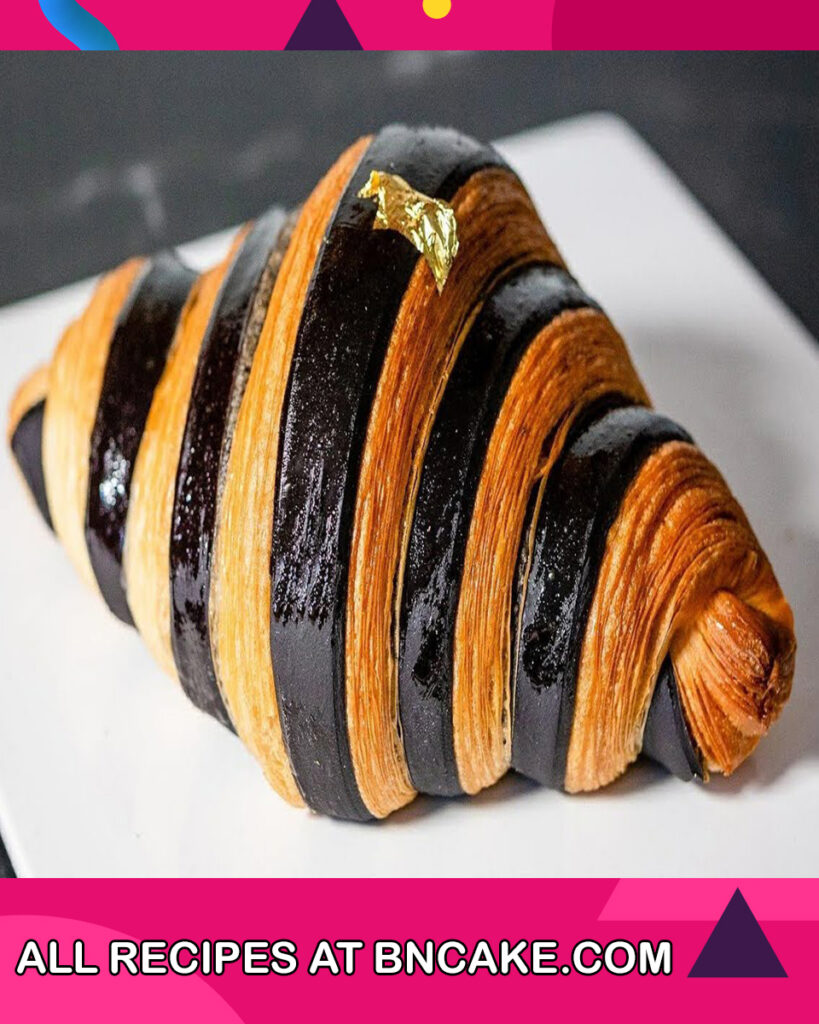
How To Serve Chocolate Croissant
- Warm or Room Temperature: Chocolate Croissants are best enjoyed warm or at room temperature. If they’ve cooled down, you can briefly warm them in the oven for a few minutes to restore their freshness.
- Plating: Arrange the Chocolate Croissants on a serving platter or individual dessert plates. Their golden-brown, flaky exteriors and visible chocolate layers create an inviting presentation.
- Optional Garnishes: While Chocolate Croissants are delicious on their own, you can add a touch of elegance with optional garnishes. A light dusting of powdered sugar on top can enhance their appearance.
- Pairing: Chocolate Croissants are a natural pairing with hot beverages like coffee, espresso, or hot chocolate. The contrast of the buttery pastry and the rich chocolate makes for a harmonious combination.
- Presentation: Consider serving the Chocolate Croissants on a decorative plate or a wooden cutting board. This adds a touch of sophistication and makes the experience more visually appealing.
- Accompaniments: You can also serve Chocolate Croissants with a dollop of whipped cream, a scoop of vanilla ice cream, or a side of fresh berries. This adds variety and complements the flavors.
- Sharing: Whether it’s a casual family breakfast, a brunch with friends, or a special occasion, sharing Chocolate Croissants can make the moment more enjoyable and memorable.
- Freshness: Aim to serve the croissants soon after baking or warming, when they are at their flakiest and the chocolate is still slightly gooey.
- Napkins: Provide napkins or small plates, especially if the croissants are warm and might leave behind traces of chocolate and flakes.
- Enjoyment: Invite your guests to savor the layers of buttery pastry and the melt-in-your-mouth chocolate filling. Encourage them to break off pieces and indulge in each bite.
Remember, the act of serving Chocolate Croissants is not just about providing a treat; it’s about creating an experience that engages the senses and brings people together to appreciate the simple pleasures of baking and sharing.
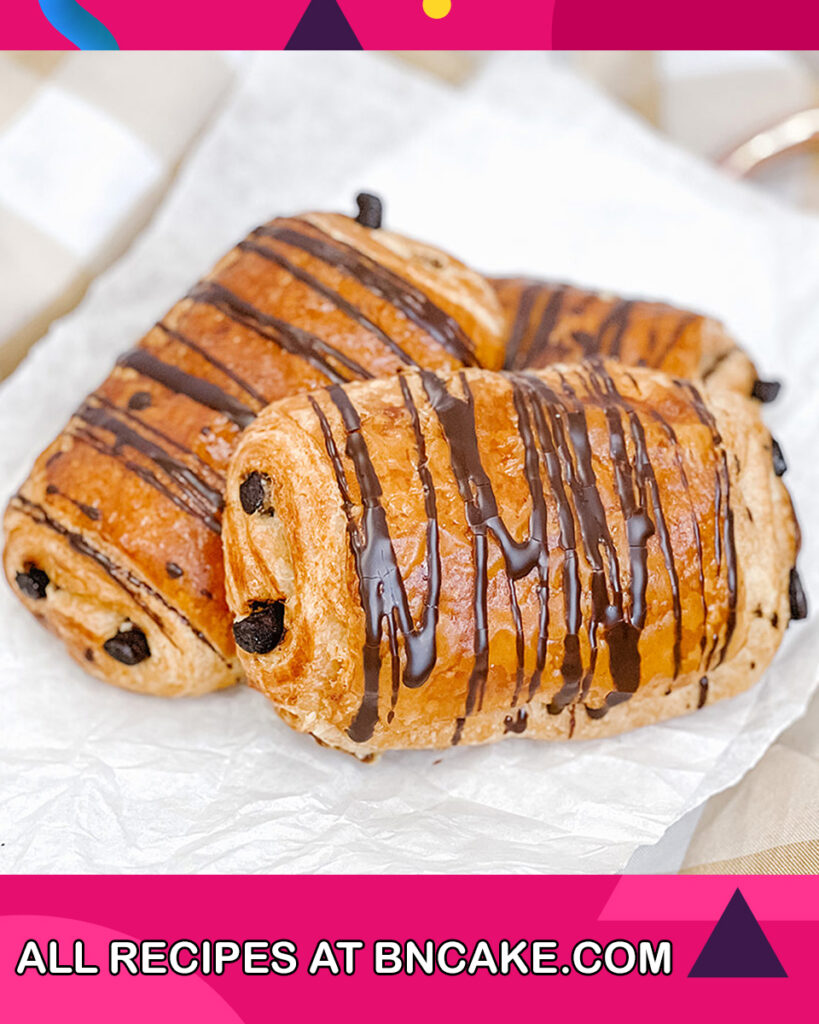
How To Store Chocolate Croissant
Storing Chocolate Croissants properly is essential to maintain their texture and flavor. Here’s how to store them:
- Immediate Consumption: Ideally, Chocolate Croissants are best enjoyed on the day they are baked. The crispy, flaky texture and gooey chocolate filling are at their peak when freshly made.
- Short-Term Storage: If you have leftover croissants, you can store them for a day or two. Allow them to cool completely before storing to prevent moisture buildup.
- Room Temperature: If you plan to consume the croissants within a day, store them at room temperature in an airtight container or wrapped tightly in plastic wrap. Avoid direct exposure to air, as it can cause them to become stale faster.
- Reheating: If the croissants have lost their crispiness, you can refresh them by placing them in a preheated oven at 350°F (175°C) for about 5-7 minutes. This will help restore some of the flakiness.
- Freezing (Long-Term Storage): If you want to store Chocolate Croissants for an extended period, freezing is a good option. Here’s how to do it:
- Allow the croissants to cool completely.
- Wrap each croissant individually in plastic wrap to prevent freezer burn.
- Place the wrapped croissants in a resealable plastic bag or an airtight container.
- Label the container with the date to keep track of their freshness.
- To thaw, place the croissants in the refrigerator overnight. You can also reheat them in a preheated oven at 350°F (175°C) for about 10 minutes until they’re warm and crisp.
- Avoid Refrigeration: Refrigeration is generally not recommended for croissants, as it can cause them to become soggy and lose their desirable texture.
- Avoid Microwave: While you can use a microwave to quickly warm croissants, it may soften their exterior and alter their texture. Oven reheating is preferred for maintaining the flakiness.
Remember that the flavor and texture of Chocolate Croissants are best when they are freshly baked. If you can’t finish them all in one day, freezing is a great way to preserve their quality for a longer time while still being able to enjoy their deliciousness later on.
Here are some more useful links for you:
Tips And Tricks For Chocolate Croissant
Here are some valuable tips and tricks to help you master the art of making Chocolate Croissants:
Preparing the Dough:
- Quality Ingredients: Use good-quality flour, fresh yeast, and high-quality butter for the best results.
- Chill the Butter: Ensure that the butter used for laminating the dough is cold but pliable. This makes it easier to incorporate into the layers.
- Consistent Thickness: When rolling out the dough, aim for consistent thickness to create even layers for the croissants.
- Even Corners: When folding the dough during the laminating process, make sure the corners are aligned to maintain an even shape.
Shaping and Assembling:
- Chocolate Placement: Place the chocolate strips closer to the wide end of the dough triangle to ensure they’re evenly distributed when rolling.
- Tight Rolling: Roll the dough over the chocolate strip tightly but gently to create well-defined layers.
- Sealing Ends: Press the ends of the croissant gently to ensure they stay sealed during baking.
Proofing and Baking:
- Proper Proofing: Allow the croissants to proof until they have visibly expanded and feel puffy to the touch. Underproofing or overproofing can affect the final texture.
- Egg Wash: Apply the egg wash gently to avoid deflating the croissants. This will give them a beautiful shine.
- Baking Temperature: Preheat the oven thoroughly to ensure even baking. Too low a temperature may result in croissants that are not properly puffed.
- Steam: Place a pan of hot water on the lower rack of the oven to create steam. This helps develop a crisp, flaky crust.
After Baking:
- Cooling: Allow the croissants to cool slightly on a wire rack before serving. This helps set the layers and prevents the chocolate from being too runny.
- Optional Garnishes: If using powdered sugar or melted chocolate for garnish, apply them after the croissants have cooled a bit.
Troubleshooting:
- Dough Too Soft: If the dough becomes too soft during handling, refrigerate it for a short while to firm up.
- Uneven Layers: Ensure consistent rolling and folding to prevent uneven layers and ensure uniform flakiness.
- Chocolate Leakage: If chocolate leaks out during baking, it may have been placed too close to the edge. Adjust the positioning next time.
- Flat Croissants: If croissants come out flat, they might not have been proofed enough. Allow more time for proofing next time.
- Dry Croissants: If croissants turn out dry, they might have been overbaked. Reduce the baking time slightly in your next attempt.
With these tips and tricks in mind, you’ll be better equipped to create irresistibly flaky and decadent Chocolate Croissants that will impress everyone lucky enough to enjoy them!
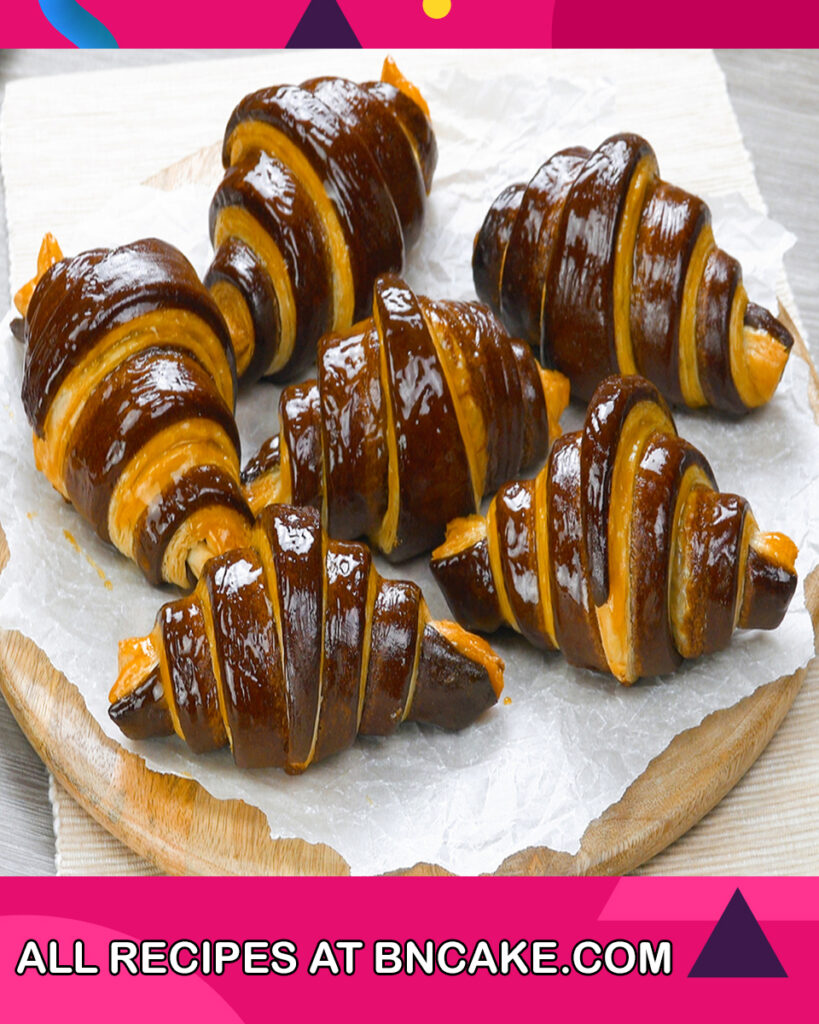
FAQs And Troubleshooting
FAQs:
- Can I use different types of chocolate for the filling?
Yes, you can use different types of chocolate based on your preferences. Dark, milk, and semi-sweet chocolate all work well. You can also experiment with chocolate chips or chunks. - Can I make the dough in advance?
Yes, you can make the dough a day ahead and refrigerate it. Just make sure to let it warm up slightly at room temperature before rolling and shaping. - Can I freeze unbaked Chocolate Croissants?
Yes, you can freeze unbaked croissants after shaping them. Place them on a baking sheet in the freezer until they’re firm, then transfer to a resealable bag or airtight container. When ready to bake, allow them to thaw and proof before baking.
Troubleshooting:
- Croissants are dense and heavy:
This could be due to underproofing or overworking the dough. Ensure that the croissants are allowed to proof until visibly puffy, and handle the dough gently during the folding and shaping process. - Croissants don’t rise or puff up during baking:
This might happen if the dough was overproofed, or if the oven temperature was too low. Properly proof the croissants until they’re just right, and ensure your oven is preheated to the correct temperature. - Chocolate leaks out during baking:
Chocolate leakage can occur if the chocolate strip is placed too close to the edges of the dough. Make sure to leave a bit of space around the edges when placing the chocolate. - Croissants are too oily after baking:
If the croissants are oily after baking, it might be because the butter wasn’t fully incorporated during the laminating process. Make sure the butter is evenly distributed in the dough layers. - Croissants are too dry or hard:
Overbaking can lead to dry or hard croissants. Be sure to monitor the baking time and take them out of the oven when they’re golden brown and puffed. - Croissants are not flaky:
Lack of flakiness can be due to insufficient folding and rolling during the laminating process. Make sure to perform the recommended number of turns to create distinct layers. - Croissants are misshapen or uneven:
If the croissants are misshapen, ensure you’re cutting and shaping the dough evenly. Use a ruler or template for consistent sizing. - Dough is tearing during shaping:
If the dough is tearing, it might be too cold or too elastic. Allow it to rest briefly at room temperature before shaping to make it more pliable.
By addressing these FAQs and troubleshooting tips, you’ll be better equipped to troubleshoot and overcome challenges that might arise while making Chocolate Croissants. Remember that practice and patience will help you achieve the perfect flaky and delicious results you’re aiming for.
Nutrition Information
The nutritional information for a Chocolate Croissant can vary based on factors such as the size of the croissant, the specific ingredients used, and the recipe variations. Here’s a general estimate of the nutritional values for a typical medium-sized Chocolate Croissant:
Calories: ~250-350 kcal, Total Fat: ~15-20g, Saturated Fat: ~10-12g, Cholesterol: ~35-50mg, Sodium: ~200-300mg, Total Carbohydrates: ~25-35g, Dietary Fiber: ~1-2g, Sugars: ~10-15g, Protein: ~4-6g
Please note that these values are approximate and can vary based on the specific recipe and portion size. Additionally, nutritional information can change if different types of chocolate or variations in the dough are used.
For more accurate nutritional information, it’s recommended to use a nutritional calculator or consult with a registered dietitian. Keep in mind that Chocolate Croissants are a treat and should be enjoyed in moderation as part of a balanced diet.

